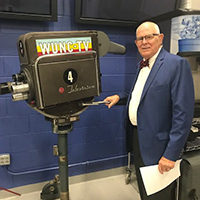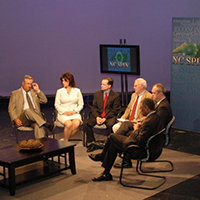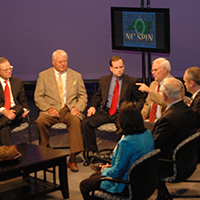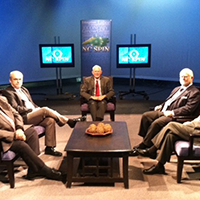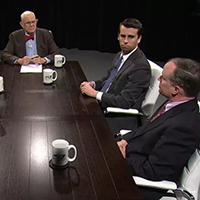State has nearly depleted job recruitment funds
Published February 15, 2015
by Colin Campbell, News and Observer, February 14, 2015.
After promising employers nearly $300 million in incentives grants for new jobs in his first two years, Gov. Pat McCrory’s administration has nearly depleted the main pot of money the state uses to lure companies to North Carolina.
Now McCrory wants legislators to approve a new jobs plan he calls N.C. Competes, which would retool the state’s existing incentives program and substantially increase the money available each year. A bill is expected in the legislature as early as this week, and is sure to reignite the ongoing debate over the use of economic incentives to boost the state’s jobs.
McCrory had warned of low funds last summer and asked legislators to add more, but the proposal failed as opposition lined up from both political parties. Incentive supporters say the state will fall behind if it doesn’t have money to offer major employers. Opponents say such grants are not the best way to add more jobs.
Governors have long used the program – the Jobs Development Investment Grant, or JDIG – when in competition with other states for new projects or expansions. McCrory used it to help land MetLife, which is adding 2,622 jobs in Charlotte and Cary, and for Citrix, which is bringing more than 300 jobs to downtown Raleigh.
He’s also been more generous with the JDIG funds than his predecessor, Bev Perdue.
An analysis of incentives records from 2011 to 2014 by The News & Observer found that:
• Two years into office, McCrory so far has offered more of the JDIG grant money than Perdue did in her last two years in office. McCrory’s administration has promised about $299 million through 2026 for 15,356 jobs since the governor took office. In Perdue’s final two years in office, JDIG grants totaled about $183 million through 2024 for 12,046 jobs.
• Overall, companies receiving JDIG grants since McCrory took office have been promised an average of $19,502 per job created. The per-job average in Perdue’s last two years was $15,172. In at least two cases, McCrory’s administration offered twice as much money as Perdue did for companies bringing a similar number of jobs with similar wages.
• More than 80 percent of JDIG grants issued under McCrory have gone to jobs in Wake and Mecklenburg counties, the state’s most prosperous and popular locations. Less than 10 percent has gone to counties categorized as North Carolina’s poorest. During Perdue’s final two years, about 67 percent of JDIG funds went to Wake and Mecklenburg, with about 10 percent to the poorest counties.
• McCrory was able to attract higher-paying jobs in many instances. About 47 percent of his JDIG grants promised average salaries of $60,000 or more. Under Perdue’s final two years, about 38 percent of the jobs in the program were at that salary level or more.
The JDIG program has been the state’s biggest sweetener for major employers since it launched in 2003. Proponents argue that the grants are a good deal because companies are paid back a percentage of the income tax revenue the new jobs generate. Had the employers located elsewhere, the state wouldn’t see any increase in tax revenue.
JDIG grants only pay out when the companies hit hiring and investment targets. Companies that deliver on their promise can receive millions over a period of up to 12 years. McCrory’s biggest grant – for 2,622 MetLife jobs – will pay out up to $87.3 million.
“It ends up being, in essence, a self-funded program that is closely monitored,” said Dale Carroll, who served as deputy commerce secretary from 2009 to 2013.
The program has detractors who see the grants as unnecessary handouts to big business. “Instead of giving off these specialized tax incentives, why don’t we lower taxes for all businesses?” said Donald Bryson, who heads the North Carolina chapter of the conservative group Americans For Prosperity.
Bryson said his group will oppose more funding for JDIG and similar programs. “I’m not entirely sure that the Commerce Department was a good steward of the people’s money when they ran out of money,” he said.
McCrory, however, sees it differently. He blames previous governors for spending JDIG money too freely.
“I think we were in the past decade a little too haphazard and nonstrategic in offering the reimbursement,” he said. “We started changing that during my administration, where we said no to a lot of companies.”
Perdue’s administration issued 45 JDIG grants in 2011 and 2012, compared with 36 from McCrory in a two-year period. The Perdue grants came as the state’s unemployment was receding from the highs of the recession, dropping from more than 10 percent to just under 9 percent. McCrory’s grants were given as the economic conditions were improving and state unemployment continued to fall. In December, the rate was 5.5 percent.
Economic developers say the change in the job recruitment landscape has affected incentives.
“In the last couple of years, we’re seeing more projects that have larger job numbers,” said Steve Yost, president of North Carolina’s Southeast, which recruits employers to that corner of the state. “We are seeing a resurgence in manufacturing, at least in the Southeast region.”
Those jobs are coming at an increasing cost, Yost said, as companies seek larger incentives packages. “The stakes are being raised all the time,” he said.
Priority: Jobs
McCrory took office in 2013 pledging to make job growth a top priority. By the end of the year, his administration promised $172 million in JDIG grants to 20 companies – more than half of that money headed to MetLife.
The governor hailed the insurance giant’s choice of North Carolina over St. Louis as “fantastic news,” but luring the company’s retail and technology hubs took the biggest JDIG grant in the program’s history.
It also took a huge chunk out of the program’s budget. The program’s funding is capped at $22.5 million for a two-year period ending June 30, and only the state legislature can raise the limit. The cap refers to the total amount paid out – not awarded – during that period for new grants.
By last summer, McCrory and then-Commerce Secretary Sharon Decker were lobbying legislators to raise the cap to $36.5 million. They also sought a $20 million special “closing fund” to seal the biggest deals.
Neither bill passed before the General Assembly went home.
On Nov. 12, McCrory announced the last of 16 grants awarded from the JDIG fund in 2014: Technology firm Cognizant would receive up to $5 million over 12 years to bring 500 jobs to Charlotte.
Since then, the administration has relied on smaller incentive grants through the separate One North Carolina program, which has about $9 million available per year. The state’s biggest jobs announcement in the past three months has involved 149 positions.
Commerce Department officials declined to release figures showing how much money remains in the JDIG fund. A report is due April 1. Commerce spokeswoman Kim Genardo stressed that the state still has plenty of companies seeking grants. “We have a pipeline full of projects,” she said.
Allan Freyer, the workers’ rights director for the liberal N.C. Justice Center, said the available JDIG funds should have been spread among more projects.
“We soaked up half of what was available with one deal,” he said. “This administration has certainly been more generous with JDIG than any in the past, and that’s why they’re running out of money. They are spending a lot per job.”
Little for rural counties
Rural counties have seen few of the jobs lured by the JDIG program.
Last year, about 83 percent of JDIG grant money went to companies locating in Wake and Mecklenburg counties, while only 4.4 percent went to the counties that the state categorizes as poorest.
That’s an increase from 2012, when about 60 percent went to Wake and Mecklenburg and about 11 percent went to the poorest counties.
“One of the criticisms that I have heard with JDIG is that that’s where a lot of the funding has gone,” said Rep. Stephen Ross, a Burlington Republican who co-chairs the House commerce committee. “The flip side of that is if you look at where industry tends to want to locate, your larger metropolitan areas tend to attract industry.”
Commerce Department Finance Director Stewart Dickinson said companies in urban areas are more likely to create even more jobs than they initially promised. “Many of our projects that are in the urban counties outperform what they estimated,” he said.
Michael Smith, president of the N.C. Economic Developers Association, said the best way to help rural counties benefit from JDIG is to remove the cap on grants. With limited resources, he argues, state officials focus on bigger companies, passing over smaller projects in smaller communities.
“It forces the Department of Commerce to choose only the large projects,” he said, adding that the program shouldn’t have restrictions on its use in urban counties. “I would not want to limit anything in Wake and Mecklenburg, because they are the engine for all of us.”
McCrory urges action
In his State of the State address, McCrory urged legislators to pass his new jobs plan “in a matter of weeks, not months.”
Some companies have passed over North Carolina. Mercedes announced last month that it chose Atlanta over several sites here for a new corporate headquarters with 1,000 employees. And last year, Toyota looked at Charlotte for its North American headquarters but chose Texas instead. Incentives played a role in those decisions.
Rep. Rodney Moore, a Charlotte Democrat, is critical of GOP legislators’ failure to support incentives last year. The empty JDIG, he said, “has left us ineligible for the past 90 days.”
Ross said he’s optimistic about the prospects for incentives this session. “I think the key is to run a clean bill independent of tacking anything else onto it,” he said.
The governor’s urgency on incentives comes at a moment where all signs indicate the state is in the running for a major automotive manufacturing plant. Several carmakers are reported to be in talks with North Carolina and surrounding states. And the foundation that manages the state’s national tobacco settlement money said it was setting aside $50 million to help the state chase an auto plant.
That might help the state land that project, officials said. But the larger questions about the state’s approach on incentives will remain.
McCrory says he intends to create tighter controls to make sure incentives are a successful investment for the state. He’ll have to make that case to skeptical legislators in the coming months.
“I think it needs to be much more strategic with the new economic development plan ... which lists which industries have the best potential for growth and sustainability,” he said. “We’ve got to connect JDIG with the strategic plan as opposed to just doing first-come, first-serve, and then you’re out of money.”
STAFF WRITER CRAIG JARVIS CONTRIBUTED TO THIS REPORT.
February 15, 2015 at 1:52 pm
Richard Bunce says:
Significantly reduce State and Local taxes and regulations and get rid of all this nonsense that no government should ever engage in.
